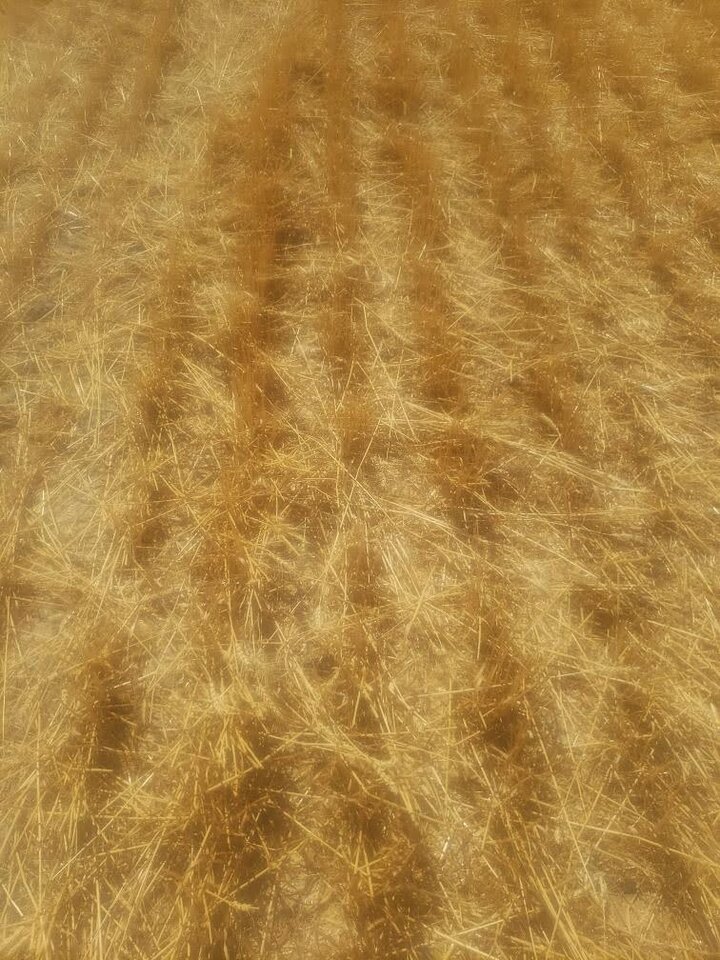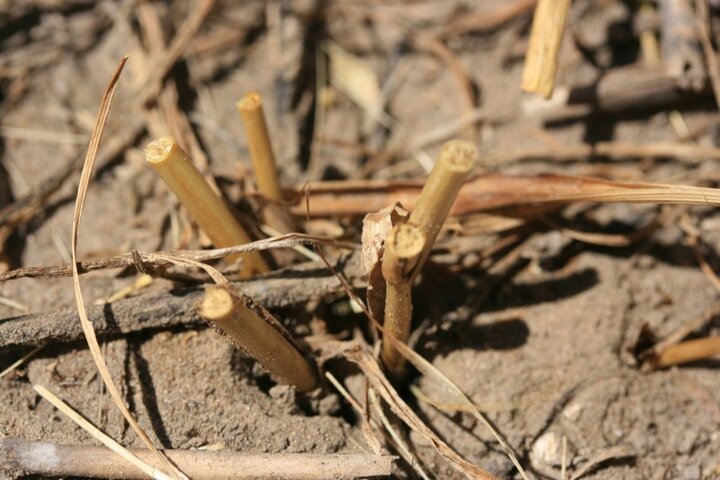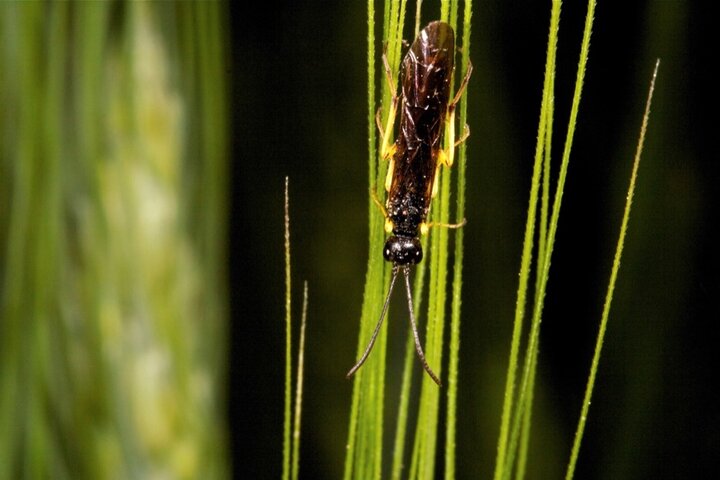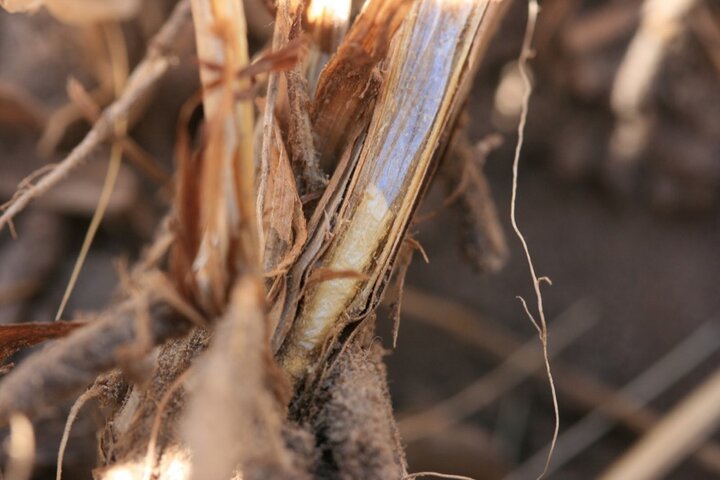Wheat stem sawfly (WSS) has been a very significant pest of wheat in the northern wheat-producing regions of our country such as Montana and North Dakota and well into Canada. Larvae cut and weaken the stems of maturing wheat causing the wheat to lodge creating very significant harvest losses in many situations. WSS damage in winter wheat was first noted in Nebraska in the early to mid-1990s. The first infestations were noted in Banner County near the Wyoming border. It has continued to increase ever since and now is a very significant issue. Integrated pest management will be needed to attack the problem with multiple tactics. Crop rotation, resistant varieties with solid stem characteristics, tillage, field width, and trap crops are some of the tools that can be used to combat this problem.
Following the moderately heavy infestation of WSS in winter wheat in the 2019 growing season, we had concern for ongoing infestations in 2020. During May and early June 2020, adult sawflies were observed in fields, but we were unsure of the level of infestation. Those emerging numbers of sawflies developed into another year of significant sawfly infestation and cutting as we are seeing during the 2020 winter wheat harvest. Infestations this season are moderate in the northern Panhandle and heavier in the southern Panhandle. Note the lodged tillers remaining after harvest in a Deuel County field (Figure 1). Dryland wheat yields are looking good averaging from 40 to 50 bu/ac despite sawfly activity in the northern Panhandle. Some yields in the southern Panhandle are as low as 25-30 bu/ac due to the sawfly. The wheat harvest this year is ahead of last year due to warmer, drier weather.
Dryland wheat is most seriously affected but some level of infestation also occurs in irrigated wheat. Dryland wheat adjacent to undisturbed stubble from last year appears to have the worst infestations. In some fields, 50 to 70 percent of the stems are cut for the first 50 to 100 feet of the field edge (Figure 2). Cutting tapers off further into the field but may be as high as 15% across an entire field.


Sawfly larvae overwinter in the stubble (Figure 3) of the previous year’s crop and emerge in May and June to attack the developing crop during stem elongation. Females (Figure 4) emerge from the stubble, mate, and lay an egg in the newly elongating wheat stem. The egg hatches and the larvae feed and tunnel through the nodes of the developing wheat finally to girdle and weaken the stem causing lodging for its exit from the remaining stub the following spring. The larvae live in a pupal chamber inside the stub at the very base of the stem (Figure 5 & 6) after harvest and through the winter.




